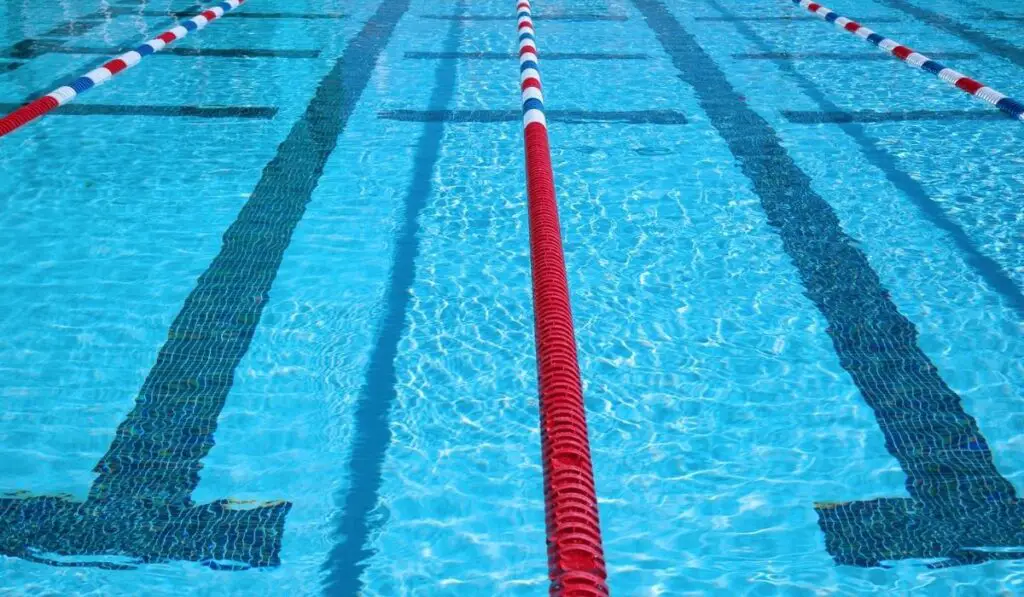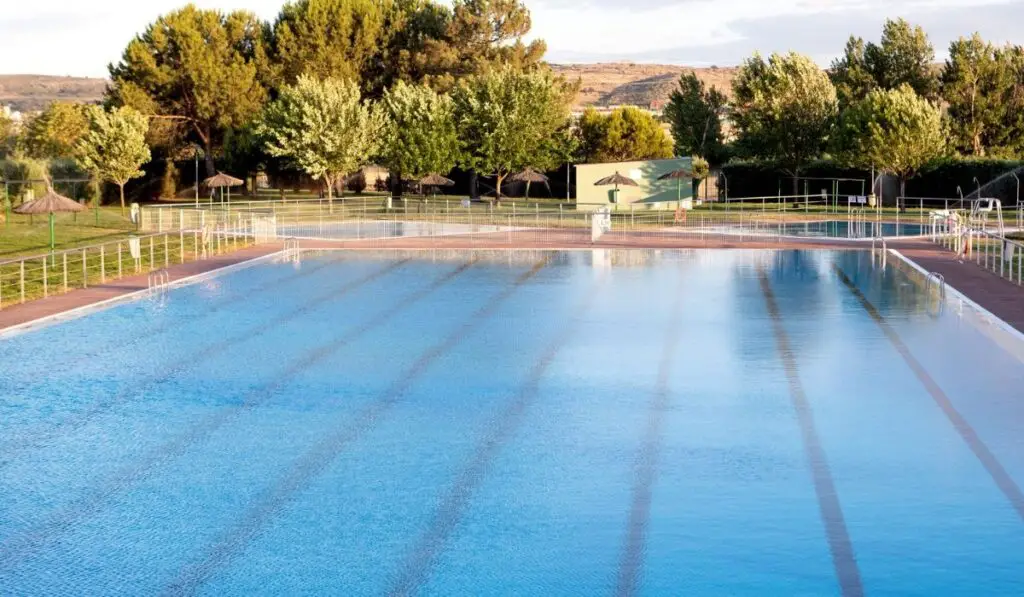Admit it: At one time or another, you’ve thought about what it would be like to dive in an Olympic pool. There’s something so mesmerizing about the graceful jumps and twirls, followed by the dramatic splash of the swimmer hitting the water and sinking rapidly. But just how deep are olympic pools?
According to the Olympic Committee, two meters (7 feet) is the minimum required depth for Olympic pools, and most are five meters (12 feet) deep. This depth is crucial for allowing the athletes to swim and dive effortlessly, and it reduces the chances of strong waves interfering with others.
Let’s take a closer look at olympic pools, how they compare to other pools, and whether they’re heated. All of your questions about these incredible pools will be answered!
How Deep Are Olympic Pools?

Typically, Olympic pools are three meters deep. The deeper a pool is, the better it is for the athletes. To give you perspective, this can be compared to swimming in an ocean’s rough waters.
The waves slow you down and make swimming difficult. As such, Olympic pools are made deep to help athletes perform better and reduce or eliminate the hazardous nature of the waves.
Teri McKeever, California’s women’s swimming team head coach, affirms this analogy. She says that Olympic pools are designed to be deep so that the waves don’t rebound back to the swimmers and hamper their performance.
How Deep Are Olympic Dive Pools?
Generally, an olympic diving pool is 5 meters, or 16 feet, deep, as per the International Swimming Federation’s recommendation. The International Swimming Federation (FINA) is the international body mandated with the regulation of international competitions for water sports.
FINA also requires that all diving platforms be 10 meters, or a whopping 32 feet, above the ground, while springboards are generally much lower.
Diving pools are designed to be quite deep to allow the divers to dive into them safely. They are built with deeper ends than usual.
The increased depths reduce the chances that a diver will get injured. When you dive, you partially submerge in the water for a moment.
If there’s not enough water to cushion your fall, it can lead to injury. But if you jump into a pool that’s deep enough for your body length and you dive correctly, then your body will be safely cushioned by the water upon impact.
The increased depth of Olympic pools also prevents damage from occurring outside of the pool itself. Not only does it reduce injury risk during dives, but it also protects spectators and facilities from accidentally colliding with divers while they’re underwater.
How Deep Are Normal Swimming Pools?
If you’ve ever spent any time at a swimming pool, then you know that the depth of the water varies. While some people may prefer shallow pools, others opt for deeper pools. So, what is the recommended swimming pool depth?
A swimming pool’s depth varies primarily depending on its use. It may also change if you need to save some costs during construction. Overall, a pool will range from a minimum of 4 feet, if it’s only to be used for relaxing, to 8 feet if you intend to use it for diving.
The following are the recommended depths for different pools.
Pools for Beginners (or a Home With Pets and Children)
Accidents can easily happen in pools, so it’s crucial to minimize any risks when there are novice swimmers, children, and pets around. Yes, you can use covers to increase safety, but a relatively shallow depth is the ultimate safety measure.
A shallow depth will allow you to stand and even perform rescue operations in case accidents happen without endangering your safety.
Pools for Diving
Most home pools don’t include a diving platform but if you need to dive, consider a minimum depth of 8 feet for safety reasons.
Sports Use
Water sports such as volleyball and water polo have become increasingly popular. And if your pool hosts such sports, its depth should be seriously considered. This is important as it gives the players the required stamina and helps them stand upright.
These pools are about 4 to 6 feet. The depth depends on the game. For example, water polo rules state that players should not touch the floor. Therefore, polo pools will be deeper than others.
Pool Games
Pool games are a great way to spend time with friends and family. They include racing and collecting objects, among other games, and because children also play such games, these pools are usually quite shallow.
In most cases, you will find them to be about 4 feet deep.
Pool for Cooling Off
Relaxation, lap swimming, and light swimming are some major uses of a pool at home. Pools can also be used for people with disabilities, beginners, or older adults. Such pools are between 4 and 6 feet deep.
Keeping Costs Down
A pool can be very expensive to construct, especially as you add special features and custom designs. However, cutting costs doesn’t mean you need to build a sub-standard pool. You can cut costs by having a shallower pool.
This may also mean the pool won’t be suitable for all uses, especially diving, but it can accommodate other purposes and people. If you want to go this route, you should have the pool be 4 feet deep.
Overall, pool construction has changed in recent years, and individuals are mixing things up to have a multipurpose pool. Some have L-shaped pools with shallow ends for children and deep ends for experienced diving enthusiasts. You can also opt for a flat, shallow pool or a standard pool with shallow and deep ends.
Are Olympic Pools Heated?

When you get into a pool, you often experience a cold-like feeling, but after a few lengths, your body becomes accustomed to the water, and you start to feel comfortable. But despite this, are Olympic pools heated?
According to FINA, olympic pools must be heated and maintain a specific temperature. Generally, this is set at 79°F, with a margin of plus or minus one degree. In most cases, pools used for competitions maintain temperatures at 77-82°F, although others used for learning will be colder.
An ideal temperature in Olympic pools is a must-have if the athletes will perform at their best. Such temperatures help to avoid dangers such as cardiac arrest if the water is too cold and overheating if it’s too warm.
